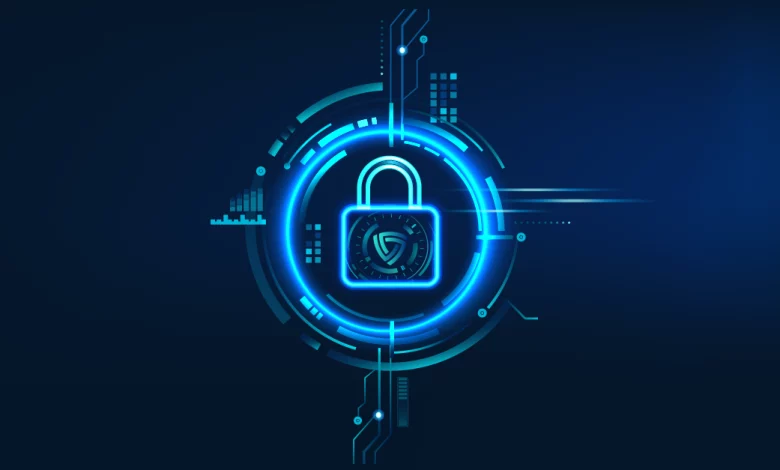The Digital Fortress Blueprint: Crafting Your Cyber Security Plan

In an age where our digital world is both a gateway to endless opportunities and a potential minefield of threats, the importance of a strong cyber security plan cannot be overstated. This article delves into the essential aspects of crafting a robust cyber security plan that shields your organization from the evolving landscape of cyber threats.
The Evolving Cyber Threat Landscape
The nature of cyber threats and attacks is in a constant state of flux. From sophisticated hacking attempts to malware and social engineering, the range of threats is extensive. To navigate this ever-shifting landscape, organizations must adopt a proactive and comprehensive security strategy that anticipates and adapts to these threats.
The Necessity of a Cyber Security Plan
Every organization, regardless of size or industry, should have a dedicated cyber security plan. This plan is not merely a precaution but a proactive measure to safeguard critical assets, sensitive data, and reputation. It serves as a blueprint for resilience in the face of digital threats, providing numerous benefits to organizations that invest in a well-structured plan.
Components of a Cyber Security Plan
A comprehensive cyber security plan consists of several key components. It includes a risk assessment to identify vulnerabilities, a clear set of policies and procedures to guide security practices, and an incident response plan for reacting swiftly to threats. These elements, when harmonized, create a robust defense against cyber threats.
Identifying Vulnerabilities
Identifying vulnerabilities in your organization’s digital infrastructure is a fundamental step in crafting a cyber security plan. This process is aided by vulnerability assessments and penetration testing, which reveal potential weaknesses. A clear understanding of these vulnerabilities provides the foundation for risk management and mitigation.
Risk Management and Mitigation
Effective risk management and mitigation involve assessing and prioritizing risks. By identifying the most critical threats, organizations can allocate resources and efforts accordingly. Strategies for risk mitigation encompass implementing security controls, monitoring for breaches, and proactively defending against potential threats.
Employee Training and Awareness
One of the often-overlooked aspects of cyber security is the role of employees. Training and raising awareness among staff members are vital components of a successful plan. Educated employees are the first line of defense, recognizing and responding to threats effectively, thereby reducing the organization’s vulnerability.
Incident Response and Recovery
No plan is foolproof, and when a breach occurs, a well-structured incident response plan is essential. This section discusses the steps involved in responding to and recovering from security incidents, minimizing damage and restoring normal operations.
Compliance and Legal Considerations
Compliance and legal considerations are a critical aspect of any comprehensive cyber security plan. In this section, we explore the significance of adhering to cyber security regulations, laws, and the potential legal consequences of data breaches. Here’s a more detailed breakdown of the key points in this section:
- Importance of Compliance: Cyber security is not only about protecting your organization from threats but also about ensuring that you meet legal and regulatory requirements. Compliance is essential because it helps maintain the trust of customers and partners, avoids legal consequences, and mitigates reputational damage. Regulations vary by industry and location, but they generally focus on safeguarding sensitive data, privacy, and the notification of breaches.
- Data Protection Regulations: Different jurisdictions have enacted data protection laws to protect the privacy and security of personal and sensitive information. For instance, the European Union’s General Data Protection Regulation (GDPR) and the California Consumer Privacy Act (CCPA) are notable examples. Compliance with these regulations requires specific practices and standards for data handling, storage, and notification of breaches.
- Industry-Specific Regulations: Some industries, such as healthcare (HIPAA) and finance (GLBA), have specific regulations that impose additional requirements on data security. Organizations operating within these industries must ensure that their cyber security practices align with the applicable industry standards.
- Legal Implications of Data Breaches: When a data breach occurs, an organization may face severe legal consequences. These consequences may include fines, penalties, and lawsuits from affected parties. Organizations that fail to report breaches in a timely and transparent manner may face more severe legal repercussions.
- Penalties for Non-Compliance: Penalties for non-compliance can be substantial and damaging to an organization. These penalties vary widely and can include fines, legal costs, and regulatory oversight, depending on the jurisdiction and the nature of the breach.
- Risk Mitigation through Compliance: Ensuring compliance with cyber security regulations and laws is a form of risk mitigation. By adhering to these standards, organizations reduce their exposure to legal risks and demonstrate their commitment to protecting customer data.
- Regular Compliance Audits: Part of a robust cyber security plan includes regular compliance audits to assess whether an organization is meeting all relevant legal and regulatory requirements. Audits help identify areas of non-compliance and provide opportunities for corrective action.
The Blueprint in Action
The final section guides organizations on how to put their cyber security plan into action. It provides practical steps for crafting and implementing a plan tailored to the unique needs and challenges of the organization, culminating in a fortified digital fortress ready to repel cyber threats.
Final Word
In a world where digital threats loom large, the importance of a robust cyber security plan cannot be overstated. Craft your digital fortress, and fortify your organization against evolving threats. To embark on this crucial journey, partner with Ubisec, your trusted IT solutions provider with over 15 years of experience. Serving SMB/SMEs in the Los Angeles and Orange County regions of California, Ubisec stands ready to guide you through the process of creating a resilient cyber security plan. Safeguard your future; contact Ubisec today and build your defenses against the ever-changing digital threat landscape.




